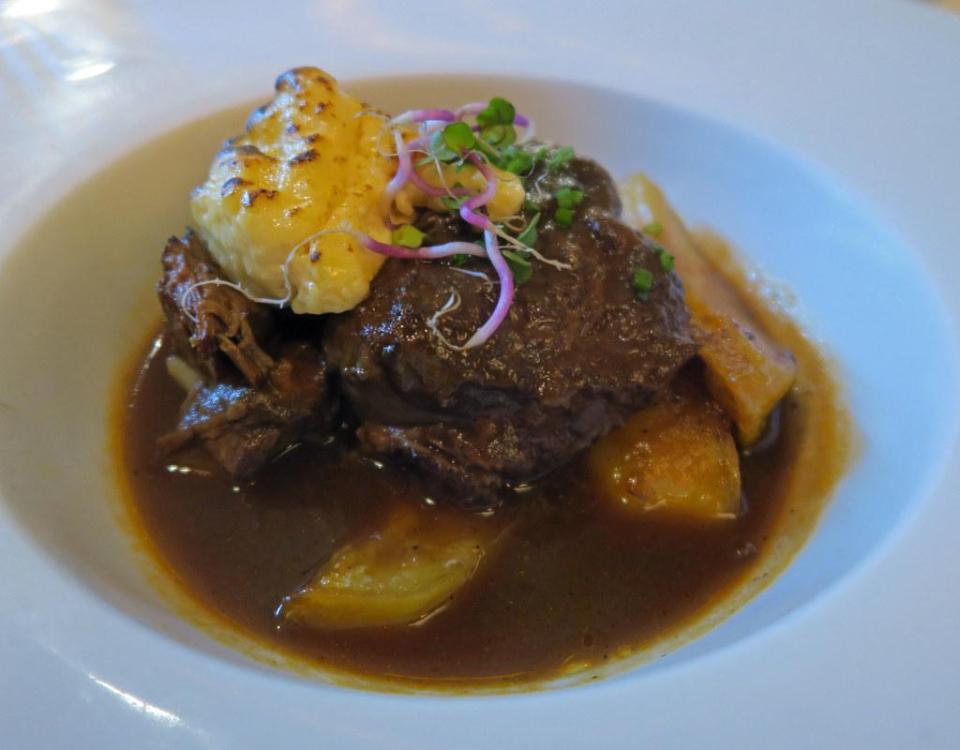We’ve eaten the snout, the tongue, the ears, the brains. We’ve discounted the eyes. Please tell me that you’re not going to throw away what remains of the head just yet.
Please, please tell me you have designs on the pork cheeks! Whether slow cooked fresh or cured to make a guanciale-type bacon, these cheap cuts are utterly delicious. And we still won’t be finished with the head.
Attribution-NonCommercial-NoDerivs 2.0 Generic (CC BY-NC-ND 2.0)
Pork cheeks are one of the most overlooked parts of the pig. They live in a pocket of fat just beneath the eyes, next to the jowls with which they are sometimes confused. They aren’t large to begin with and will shrink more as their fat renders during cooking so you ‘ll need two or three per person for a main dish, depending on the recipe.
It is best to sear them in a pan, then slow cook them, giving that fat time to render out and moisten and flavour the flesh. The braising liquid can be enhanced with white wine or, of course, cider. Alternatively, a tomato sauce does no harm, at all.
If you fancy a Chinese treatment, this recipe braises them with 5-spice, chillies, Sichuan peppercorns and rice wine or Serious Eats has an adaptation of a Fuchsia Dunlop recipe for braised cheeks with daikon radish, although cauliflower could easily be substituted if preferred. The jowls can also be used in this recipe which has more Cantonese flavours.
Finally, should you wish to cure your pig cheeks or jowls to make guanciale-type bacon, here is a method. Note that, depending on weight, it takes between three weeks to four months to cure in the fridge, so isn’t something you decide to do one wet Tuesday afternoon. It takes planning, but is well worth the trouble. This link includes full instructions and a video.
Guangiale - Image by Popo le Chien, licensed under the Creative Commons Attribution-Share Alike 4.0 International license.
So what do we have left of the head? Teeth and whiskers. Not much we can do with them. I have heard of a fabled Sichuan preparation whereby the animal’s hard upper palate is converted to something chewy but edible by the name of 天堂 (tiān táng), meaning ‘paradise’ but although I’ve seen pictures and it looks like something I’d try, a recipe has so far proved elusive.
However, there is one thing left. The stripped skull is sold in markets to be used in making stocks and broths. Bone soup, if you will. How much actual flesh and or collagen remains attached is a matter of luck, but it will probably brighten up your noodle soup.



.thumb.jpg.0e399d2457a945891d52cfcdea2f2450.jpg)

